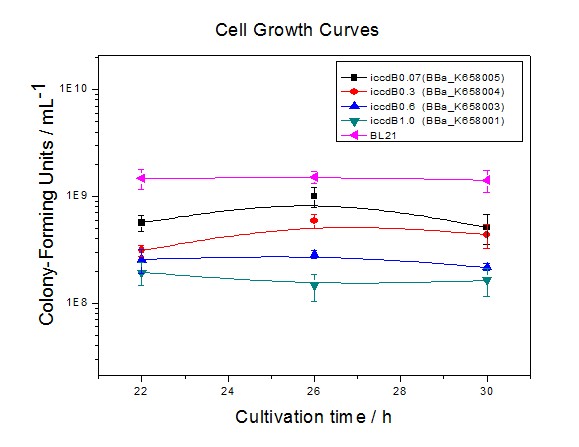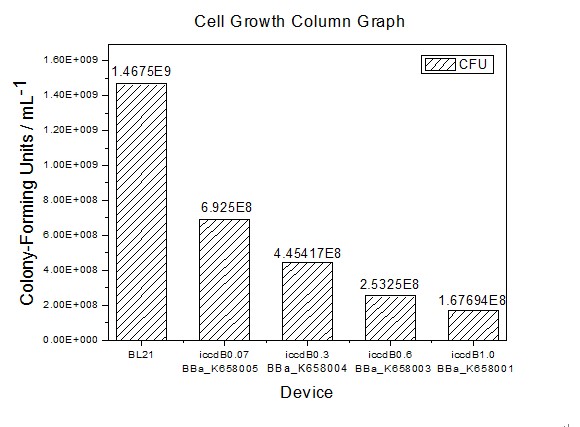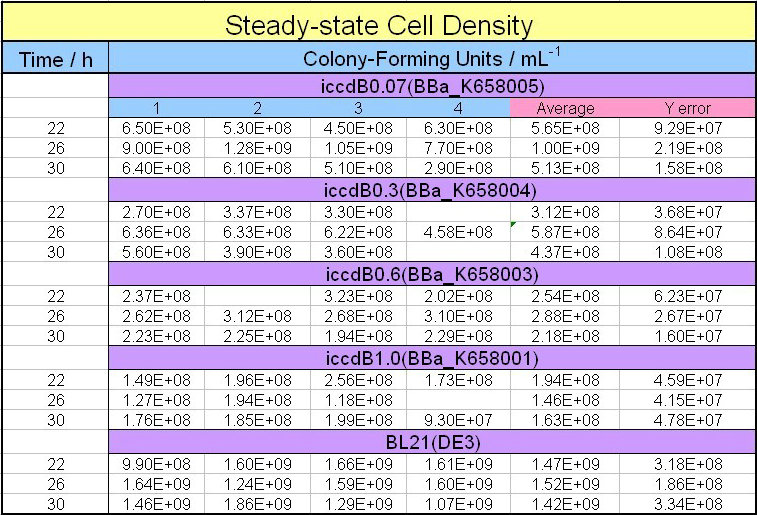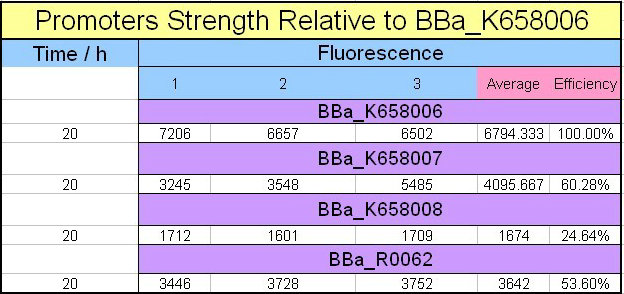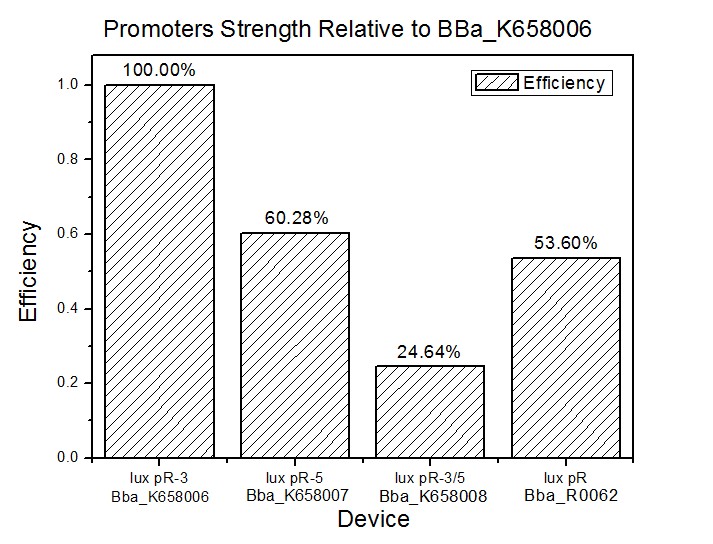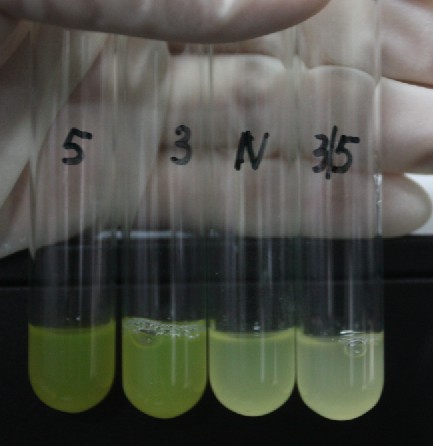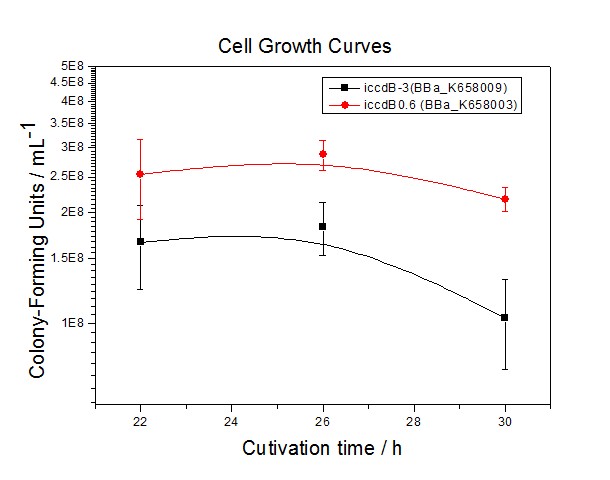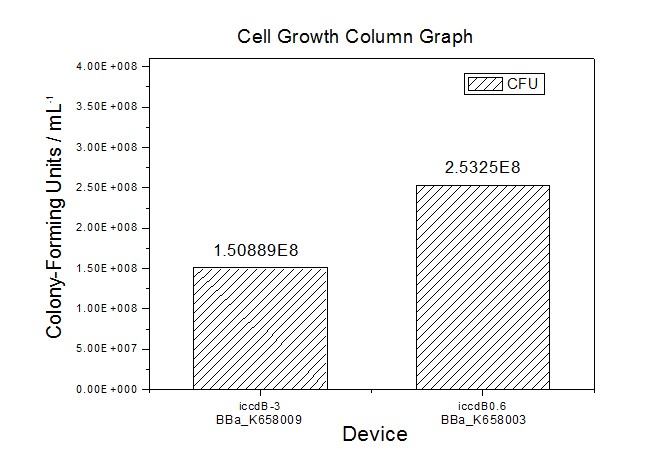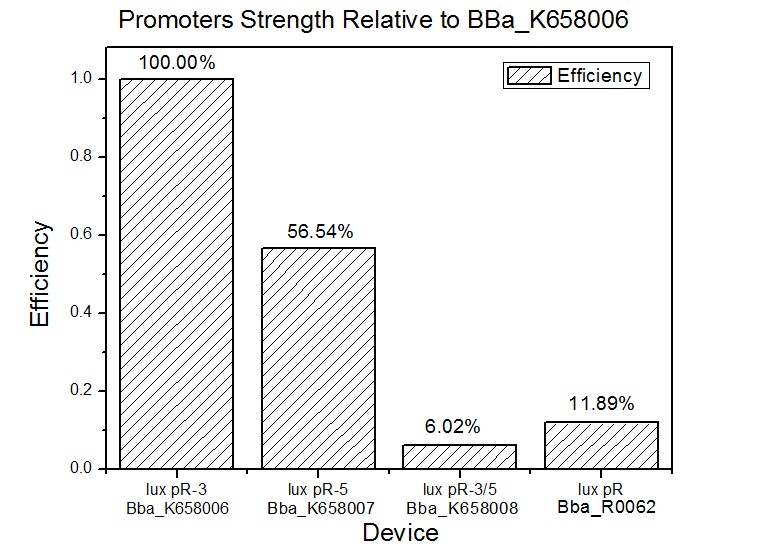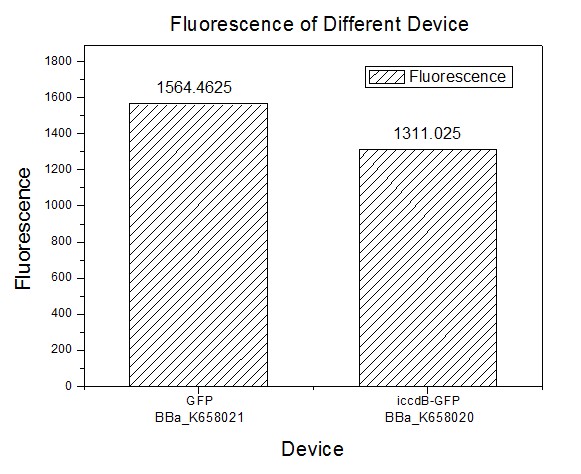Team:XMU-China/Result
From 2011.igem.org
Contents |
the population-control device with RBS0.07
In order to test the performance of the bacteria population-control device iccdB0.07, this device was first cloned into plasmid pSB1A2, followed by transformation into E.coli strain BL21.
The cell growth curves in Figure 2 showed the bacteria population-control device successfully maintained the cell density at a lower value at the steady state compared with BL21’s cells without this circuit. Besides, circuit-regulated cell growth (black dot) has a relatively longer steady state than cells without this circuit (red dot).
For iccdB0.07 regulated cell growth, the viable cell density first start to decline around 8h and then reached a steady state after two minor oscillations. Compared with bacterium without this circuit, the iccdB0.07 regulated bacterium has a lower media-consuming rate due to its lower cell density.
The iccdB0.07 regulated cell growth might be explained by “ON-OFF” mechanism based on the quorum sensing system.

Population-control devices with RBS of different strength

Figure 2, figure 3 and table 1 illustrate that by using RBS of different strength in the population-control device, we were able to control the steady-state cell density of a bacteria population at different levels. And a population-control device with RBS of high strength results in a low steady-state cell density. It might be explained by the mechanism that for circuit-regulated growth, the cell death rate is regarded proportional to the intracellular concentration of the killer protein. The expression of the killer gene is regulated by the strength of its upstream RBS. Therefore, a RBS with higher strength promises more killer protein in vivo, which leads to a higher death rate of the bacteria population.
Strength of promoter lux pR and its mutants
Four lux pR strength testing devices (BBa_K658016 BBa_K658017 BBa_K658018 BBa_K658019) were first cloned into plasmid pSB1A2 respectively, followed by transformation into E.coli strain BL21. Fluorescence was measured when cell growth reached a steady state (around 20h). The results are shown in following figures:

Figure 4, figure 5 and figure 6 illustrate that mutated promoters lux pR-3 (BBa_K658006) and lux R-5 (BBa_K658007) dramatically increased the fluorescence intensity at steady state compared with wild type promoter lux pR (R0062), while mutated promoter lux pR-3/5 (BBa_K658008) gave an even weaker expression of GFP than promoter lux pR (R0062). It might be explained that the mutagenesis at position 3 and position 5 of the sequence of lux pR (R0062) changed the binding strength between promoter lux pR and protein luxR.
As is shown in figure 5, promoter lux pR-3 has the highest strength of the four. Mutation at position 3 might lower the threshold for the binding reaction between LuxR/AHL protein complex and promoter lux pR, which starts the Quorum Sensing system at a relatively earlier period with a lower cell density compared with circuits regulated by wild type promoter lux pR (BBa_R0062). The earlier the QS system is started, the more GFP might be produced, leading to a higher fluorescence intensity at steady state.
Population-control devices with mutated promoters

Figure 7 and Figure 8 illustrate that the population-control device iccdB-3 programs a relatively lower steady-state cell density compared with iccdB0.6. This matched the result of the test on four lux pR promoters’ strength in our IR-GFP device (BBa_K658016). The strength of lux pR promoters were defined as follows:

As is shown in figure 9, promoter lux pR-3 has the highest strength of the four. It is probable that mutation at position 3 lowers the threshold for the binding reaction between LuxR/AHL protein complex and promoter lux pR, which starts the Quorum Sensing system at a relatively earlier period with a lower cell density compared with circuits regulated by wild type promoter lux pR (BBa_R0062).
Once the QS system is started, downstream killer protein expresses. The viable cell density reaches a steady state when cell growth rate equals to its death rate. Generally, steady-state cell density seems to fluctuate at the cell density when QS is started. Thus, the higher strength a promoter has, the earlier the population-control device is started, leading to a lower steady-state cell density.
The earlier the QS system is started, the more GFP might be produced, leading to a higher fluorescence intensity at steady state.
iccdB->GFP

 "
"


